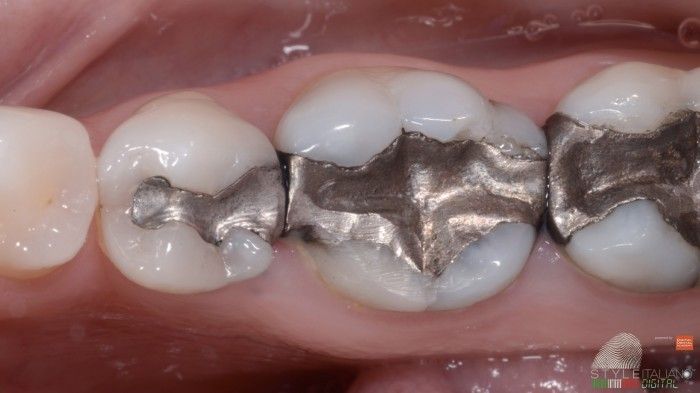
Dr. Pascal Terjanian shares an article about dental amalgam. Listed below are frequently asked questions about dental amalgam.
Is dental amalgam approved to be used in Canada and is it judged to be safe?
Restorative materials don’t involve a categorization that Health Canada requires pre-market approval. Nevertheless, HPB (Health Protection Branch) can take supervisory action on any medical device or material at any time, and HPB presently doesn’t constrain dental amalgam in Canada.
Have current findings established that dental amalgam releases mercury vapor?
Scientific findings have not confirmed that the alloy is triggering illness within the general population. It is known that amalgam fillings release little quantities of mercury vapor, particularly with chewing, and this mercury could be absorbed by the body. In a similar fashion, mercury can be absorbed from sources such as food.
Isn’t mercury a toxic substance?
As an individual element, mercury is toxic to which we are all subjected through the air, water, soil, and food. In dental amalgam, it’s attached to an alloy, which also contains silver, copper, and tin. Negligible quantities of mercury vapor are discharged from amalgam with chewing. Mercury’s toxicity depends on the quantity absorbed by the body.
What amount of mercury does our body absorb from natural sources and how much of it comes from the dental amalgam?
The quantity depends on a variety of considerations, like the kind of food you eat, your work-related exposure, ecological concentrations, and the number of amalgam fillings you’ve got. Health Canada assesses that for the typical Canadian adult the amount of mercury that the body gets from everywhere is about 9-millionths of a gram per day. Of this total, the dental amalgam is likely to contribute about 3-millionths.
Why is amalgam still utilized in dentistry when questions are being raised about its safety, whether or not there are no proven dangers?
There is always a risk when a foreign substance is employed within the human body. Dentists continuously evaluate the identified dangers of specific treatments against known advantages. In the case of this metal alloy, the scientific proof indicates that no significant risks are involved. If there are dangers, they could be obviously detected during the 150 years that this substance has been in usage. Dental staff, particularly, would have shown clinically perceptible consequences thanks to their significant contact with the alloy. There are several advantages to using amalgam, like being much stronger and more durable than alternative restorative materials, and amalgam restorations are completed at a more reasonable cost.
Can amalgam be securely utilized with every patient?
No. There are patients who are prone and sensitive to the mercury in the amalgam. It has been projected that the frequency of mercury sensitivity within the population is almost 3%.
Dentists may contemplate the use of composite fillings or other restorative materials in patients who are immunologically compromised, or have neurological conditions. Health Canada recommends that options should be considered for patients with weakened kidney function.
Should unique precautionary measures be taken with pregnant ladies or with youngsters?
Dental specialists consider various factors in deciding treatment for kids and for pregnant patients. In some cases, they may suggest alternative options, different types of treatment, or deferral of treatment.
There is no proof of detrimental consequences, despite the fact that mercury is known to cross the placenta. A committee gathered by Health Canada inferred that while “the examination proof didn’t uphold barring youngsters, pregnant or lactating women…from receiving amalgam fillings…common sense directed that pregnant ladies ought to maintain a strategic distance from any elective clinical or dental mediation until after delivery.”
Most kids today have fewer cavities than previously, and, thusly, less exposure to mercury. Dental specialists give extraordinary thought to helpful treatment for kids and any worries communicated by guardians. Dental amalgam offers benefits much of the time. Elective materials are viewed when appropriate and suggested as demonstrated.
Tune in to Dr. Pascal Terjanian’s blog for more helpful and educative information about oral health and treatments

Dr. Pascal Terjanian
Sources
CDA Canadian Dental Assosciation
https://www.cda-adc.ca/_files/position_statements/amalgam.pdf

